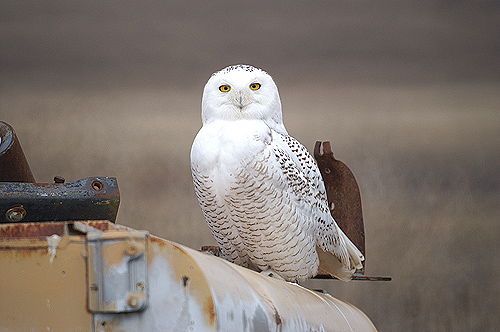
It was the kind of Montana morning that might make you want to crawl back into bed: gray sky, icy grass, and uncongenial temperatures. So what if the Mission Mountains were laden with snow! You could view them from a window, coffee in hand. You could stay put.
But in the winter of 2005-2006, there was an excellent reason to dash out into the frozen air. Northwestern Montana—the Mission and Flathead Valleys, to be precise—played host to an irruption—a large unexpected invasion—of Arctic guests: beautiful Snowy Owls. Males have fluorescent white plumage, which stands out vividly against winter browns and grays. Females have a base of white plumage with brown barring. Both sexes have eyes that are a brilliant golden yellow, capable of the most withering of stares.
Size-wise, Snowy Owls are intriguing. They stand at the height of a human toddler (two feet), yet weigh in at about a bag of sugar (four pounds). That may not seem like much, but these measurements render Snowy Owls the largest owls in North America. Coupled with sharp talons, powerful wings, and biting black bills, they are a force to be reckoned with.
Especially mesmerizing were the numbers of Snowy Owls. Most years, these rural valleys are lucky to count one Snowy Owl. During the irruption, however, numbers soared above 40. Solitary owls dotted Somers, while groups of owls clustered in Polson and Ronan. The owls hung out on farmlands, wildlife areas, and even human settlements. By day, they sat in trees and settled in rocky outcrops, perched on plows and crowded around water tanks. They rallied around fence posts and lingered in a potato field. Most of the time, they stayed silent and still.
Around sunset, the Snowy Owls came to life—preening, stretching their wings, and wiping their bills. Then they swooped away to hunt for their dinner. A favorite haunt was the Pablo Reservoir. Thirty-some owls perched in trees or on shore. Some hunted, while others roosted on the ice.
Owl Research Institute founder and president, Denver Holt, was often on hand to witness the event. “It definitely rated as one of the most significant wildlife shows in Montana, ranking up there with the former concentrations of Bald Eagles at Lake McDonald in Glacier National Park, the reintroduction of wolves into Yellowstone National Park, and the Snow Geese concentration at Freezeout Lake.”
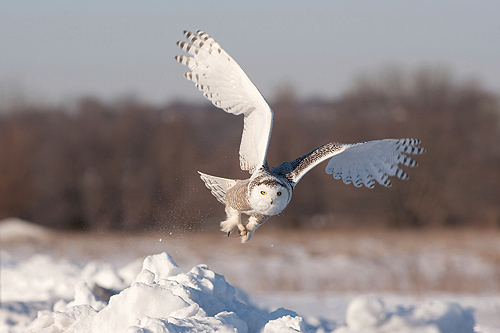
The irruption was unusual, to say the least. Typically, Snowy Owls tend to be anywhere but northwestern Montana. During the breeding season, for instance, the owls prefer tundra—that swipe of permafrost, ice, and sea that occurs high above the Arctic Circle. Points of attraction include sites in Alaska, Canada, Greenland, Scandinavia, Russia, and Siberia. The owls do not appear to possess a particular geographic affiliation. Rather, they seem to be circumpolar, flying from one chilly spot to the next.
This nomadic tendency was documented by a North American study, in which Holt and other wildlife researchers took part. Six Snowy Owls were radio-marked and tracked, most for one to two years. The owls proved capable of ranging widely. The longest journey looped from Alaska to Russia to Canada, then back to Alaska. Altogether, their wanderings encompassed more than a third of the Arctic.
Come winter, a few Snowy Owls may stay put on the breeding grounds, but most continue to move. Some fly to other parts of the Polar North, and even hang out on ice floes. Their thick plumage is key to their survival.
“The insulative value of their feathers allows them to withstand some of the lowest temperatures recorded for birds, second only to the Adélie Penguin,” said Holt. “The values compare to those of Arctic Fox and Dall Sheep, whose tolerance range is around 40 degrees below zero.”
Overall, however, many Snowy Owls seem to move south for the winter. A few owls opt for Montana, although they tend to occupy the prairie region (the north-central and northeastern parts of the state). These spots are supposed to be more similar to the tundra, and more apt to abound in prey.
In the winter of 2005-2006, the Snowy Owls did something different: They headed for the Pacific Northwest, and in large numbers. They congregated in British Columbia and Alberta, and plumed into Washington, Oregon, and Idaho... and last but not least, they descended upon northwestern Montana, and those three hotspots in Somers, Polson, and Ronan.
Although the event was unusual, it wasn’t unique. Snowy Owls swept into the Mission Valley in winter 1996-1997, with about 20 owls present and accounted for. In the winter of 1966-1967, 50-60 owls migrated into the Mission Valley. During this event, many of the owls were shot and mounted by local taxidermists.
The 2005-2006 irruption was also marked by a high volume of shooting; however, the shots were fired from cameras rather than guns. People poured into the sites to witness the Snowy Owl event. They came from all over western Montana, and folks even flew in from outside the state. “Every weekend, there were lines of cars stopped on the road,” said Holt. “There were school classes, Audubon trips, and numerous people—not just wildlife people, but people in general, just wanting to see the owls.”
Perhaps the most notable presence was that of Steve Zetterberg. During the irruption, he was working as a field supervisor for Highway Technologies. His construction job on Highway 93 was adjacent to one of the main Snowy Owl sites in Polson. On lunch breaks, he and folks from the Montana Department of Transportation kept track of the owls.
“We did it because we were interested,” said Zetterberg. They also noted numbers and behaviors of owls, as part of an Owl Research Institute study, for which Zetterberg eventually became a co-investigator.
As the study progressed, there was also an irruption of questions, most predominantly “Why here?” and “Why now?” A potential answer lay in the fact that many of the owls were in their first year of life. Summer 2005 could have been a prolific breeding season, with the owls producing a large number of young. With a swell in population, the juveniles might have had to fly south to find new hunting grounds and food.
The research team also found that there were good reasons to choose western Montana: In winter 2005-2006, it was an all-you-can eat delicatessen. Actually, it was more like an all-you-can-eat hot dog stand, for the menu was fairly limited. The Snowy Owls ate almost exclusively voles—rodents, rather similar in appearance to mice, but with fuzzy coats and short tails.
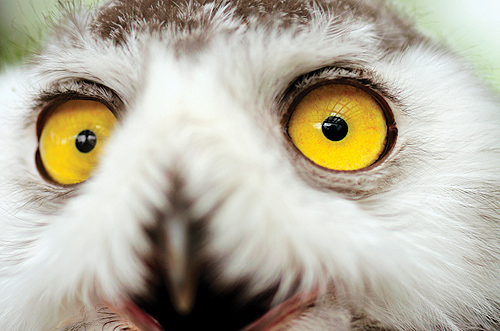
To be absolutely accurate (thanks to another Owl Research Institute study), Snowy Owls consumed 99.7% voles at Polson, 97.9% at Ronan, and 90.9% at Somers. Among the remains was also the occasional bird—here a Ring-billed Gull, there a Northern Harrier—a smattering of Pocket Gophers, and a weasel.
These exacting percentages emerged after collecting more than a thousand owl pellets (what owls regurgitate after swallowing their prey) and dissecting them to examine the remains (more than 5,400 prey items). Clues, such as skulls and upper palates containing teeth, were essential to determining what birds and mammals the owls had eaten.
Why so many voles? During the irruption, voles were at a peak in their population fluctuations: Quite simply, they were there, and there were many. Perhaps there was simply no need to broaden the palette.
Then there is the most mysterious of questions: How did the Snowy Owls know where to show up? They couldn’t possibly have predicted where the voles were going to be, yet they had managed to hone in on spots with high concentrations of the rodents. The owls came and they roosted, they hunted and ate. And then, like the last floes of melting snow, they were gone.
Owl Tours
Consider a Montana Owl Workshop with Wild Planet Nature Tours!
This five-day tour, centered on the Missoula and Mission Valleys, will provide ample opportunity for owl watching. With some luck, you will observe 5-8 species of owls during the workshop. You will also have ample opportunity to observe field research of Long-eared Owls, collect and dissect owl pellets, and learn extensively about the natural history and adaptations of owls. You will also assist with systematic checks of natural cavities in trees, for Northern Pygmy and Northern Saw-whet owls. One evening (weather permitting), will be used to “owl prowl.” Other evenings, there is a possibility of observing the sky-dancing courtship display of Short-eared Owls. However, please remember that the schedule, locations, and numbers of owls can change, depending on prey species populations and the timing and whereabouts of owls.
Tour leaders: Denver Holt and Megan Fylling
Tour date: Apr 21 - 25, 2011
For more information, visit www.wildplanetnaturetours.com.
What Every Harry Potter fan should know about Hedwig
In the überfamous Harry Potter series, Harry has a Snowy Owl that delivers his mail. The owl’s name is Hedwig, and as a veritable “she,” she should have the following characteristics: She should weigh about 4.3 pounds, and she should have a base of white plumage, with moderate to extensive dark barring on her breast, wings, head, and often tail.
However, in the movies, Harry’s owl is a little bit smaller—about 3.5 pounds—and a lot flashier, with plumage that is almost entirely white.
This Hedwig was played by a number of Snowy Owls, all of which were male.
Missing from both books and movies were juvenile Snowy Owls. They tend
to be the most heavily marked, with dark barring on their white plumage.
Also unaddressed is the reality of what Snowy Owls are like in the hand. They are fairly aggressive and can bite very hard.
~ Caroline Deppe serves as Program Coordinator for the Owl Research Institute (www.owlinstitute.org), based in Charlo, Montana. She likes living in a state that boasts 15 species of owls.


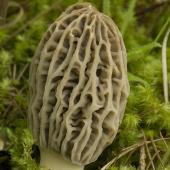
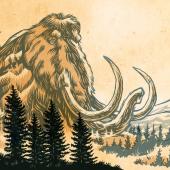
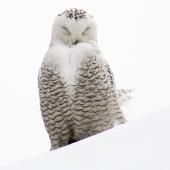
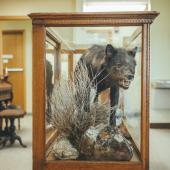


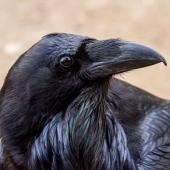
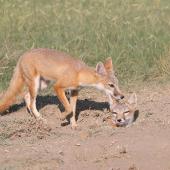
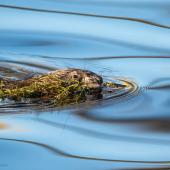

Leave a Comment Here